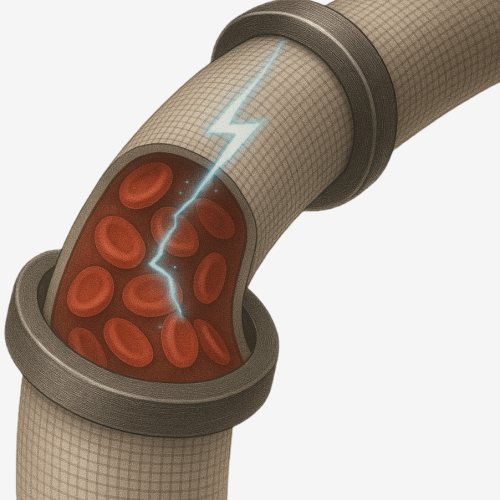SELLING OFFER
Seek co-innovation with global enterprises and governmental institutions
Self-Powered Intrabody Heart Monitoring System
251 2025. 8. 7.
Summary
This technology enables continuous heart monitoring without the need for batteries. It works by converting the natural flow of blood inside the body into electrical energy. A tiny, implantable generator captures this energy and uses it to power a heart rate sensor, all from within the body itself.
What makes this solution remarkable is its self-sufficiency. Traditional heart monitoring implants rely on batteries, which eventually run out and require surgical replacement in certain years. However, this new system eliminates such challenges, operating autonomously and continuously, significantly reducing the need for invasive procedures and long-term maintenance.
This breakthrough is especially valuable for patients with chronic heart conditions or elderly individuals who need constant care. By offering a longer-lasting, low-maintenance alternative, it improves patient safety, reduces healthcare costs, and strengthens remote monitoring capabilities.
Advantages and Innovations
This technology integrates a compact energy harvesting unit with a miniaturized heart rate sensor, both designed for implantation inside the human body. The system captures the natural movement of blood flowing through the vessels and converts it into electricity, eliminating the need for batteries or external charging sources.
The generated power enables continuous, long-term operation of the heart rate sensor without interruptions or surgical battery replacements. This makes the system ideal for chronic disease management and remote cardiac monitoring, especially in patients who require consistent oversight with minimal medical intervention.
This technology can be applied in the biomedical and healthcare industry, particularly in the development of smart, self-sustaining implantable devices for cardiovascular health monitoring. It is well-suited for applications such as continuous heart rate tracking in patients with arrhythmias, post-surgical cardiac monitoring, and elderly care.
Possible product developments include:
- Battery-free implantable heart rate monitors
- Self-powered pacemaker support systems
- Integrated biosensing platforms for remote monitoring
- Tools for personalized healthcare and preventive diagnostics
Stage of Development
Description
Traditional implantable heart monitoring devices depend on internal batteries, which degrade over time and require surgical replacement, often every few years. These repeat procedures increase healthcare costs, expose patients to surgical risks, and reduce overall comfort and quality of life.
The technology offers a transformational alternative: a compact, fully implantable system that generates its own power by harnessing the body’s natural blood flow. By eliminating the need for batteries or external charging, it enables a truly self-sustaining monitoring solution.
Its unique value lies in the combination of long-term, uninterrupted heart rate monitoring and minimal maintenance, which is particularly beneficial for elderly patients or those managing chronic cardiovascular conditions. Unlike existing bulky systems or solutions that rely on external power sources, this innovation delivers a discreet, biocompatible, and patient-friendly device that integrates power generation and biometric sensing in one unit.
Technology Keywords
Market Application Keywords
Sector Group
Type and Size of Client
Type and Role of Partner Sought
R&D Collaboration
Type of Partnership Considered
Company
Internal Reference
Category
Express your interest in this opportunity.